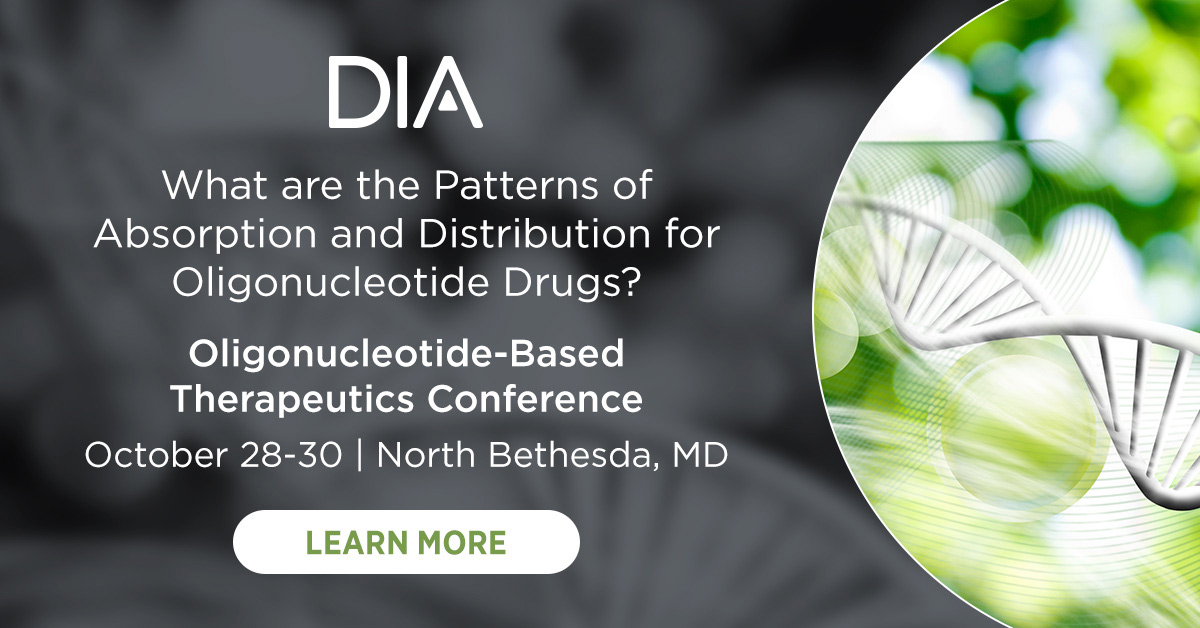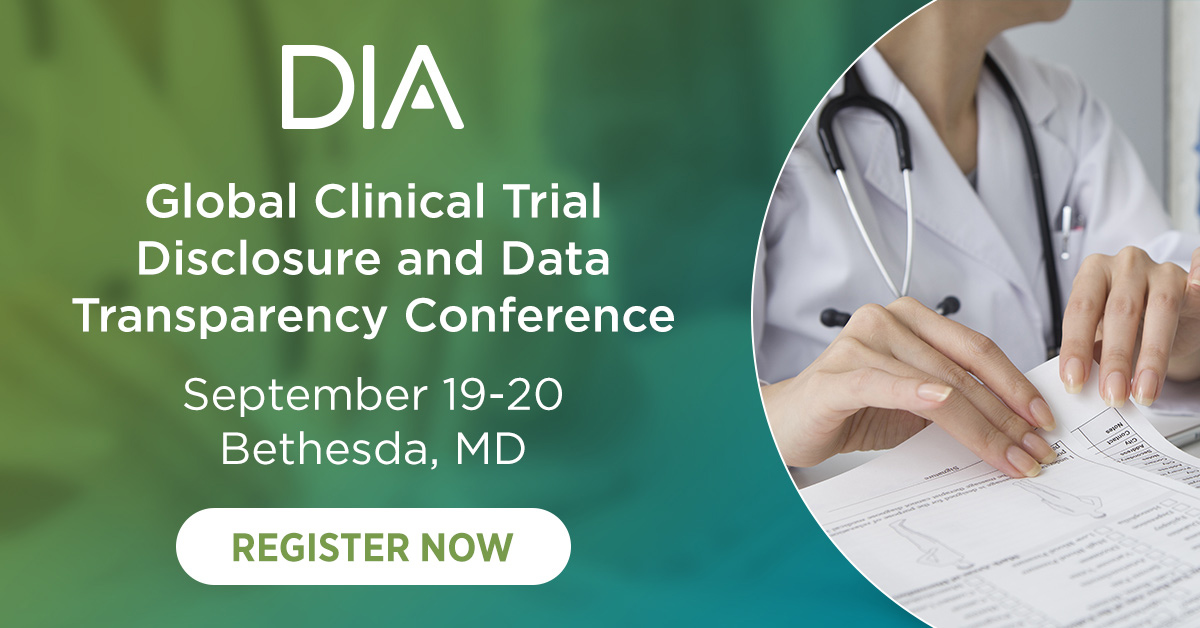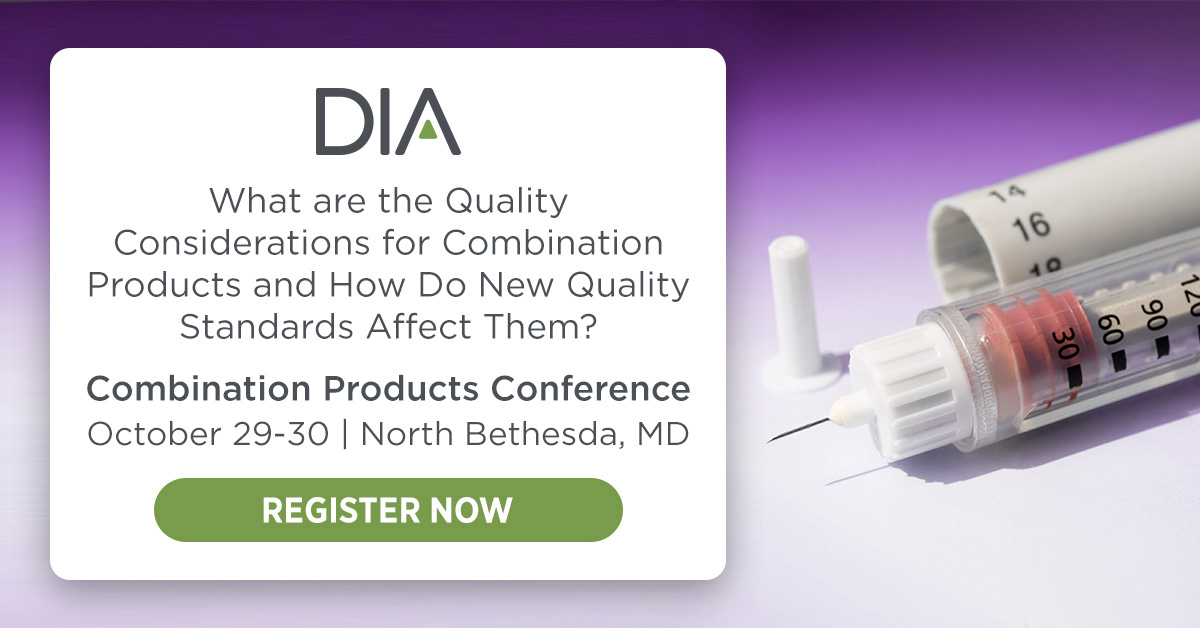September 2019 Global Forum
Table of Contents
Around The Globe
Around The Globe continued
CAREER COLUMN
WHITE PAPERS
EXECUTIVE LEADERSHIP
Subscribe
Love Global Forum‘s new online format? Subscribe today and never miss an issue.
Editorial Board
Content stream editors
Gary Kelloff US National Institutes of Health
David Parkinson ESSA Pharma, Inc.
regulatory science
Yoshiaki Uyama Pharmaceuticals and Medical Devices Agency (PMDA)
Adora Ndu BioMarin Pharmaceutical, Inc.
Patient engagement
Deborah Collyar Patient Advocates In Research (PAIR)
Lode Dewulf Servier
VALUE AND ACCESS
Marianne Hamilton Lopez Duke Margolis Center for Health Policy
Editorial Staff
Alberto Grignolo, Editor-in-Chief Parexel International
Ranjini Prithviraj, Global Associate Director, Content Collaboration DIA Publications
Sandra Blumenrath, Science Writer DIA Publications
Chris M. Slawecki, Senior Digital Copyeditor DIA Publications
Regional Editors
AFRICA
David Mukanga Bill and Melinda Gates Foundation
ASEAN
Silke Vogel Duke-National University of Singapore Medical School
AUSTRALIA/NEW ZEALAND
Richard Day University of New South Wales, Medicine, St. Vincent’s Hospital
CANADA
Judith Glennie JL Glennie Consulting, Inc.
Megan Bettle Health Canada
CHINA
Ling Su Shenyang Pharmaceutical University, Lilly Asia Ventures
Europe
Thomas Kühler Sanofi R&D
INDIA
J. Vijay Venkatraman Oviya MedSafe
JAPAN
Kazuhiro Kanmuri Inter-Professional, Inc.
MIDDLE EAST
Inas Chehimi Novartis
USA
Ebony Dashiell-Aje FDA
Young Professionals Editor
DIA Membership
Bringing together stakeholders for the betterment of global health care.
FDA’s Sentinel System:
Strategies for Expansion and Transformation
Director, Office of Surveillance and Epidemiology, FDA
Deputy Director, Office of Surveillance and Epidemiology, FDA
he FDA Sentinel System started as a congressional mandate in the FDA Amendments Act of 2007 and has given rise to one of the world’s premier evidence generation platforms. From 2000 to 2019, the distributed database has collected information on more than 300 million patients, including 70 million members who are accruing new data, and beneficiaries of both federal and private insurance. The Sentinel System operates on a distributed database design that enables Sentinel to be one of the largest multi-site, privacy-preserving, medical product safety surveillance systems with highly-curated data in the world. None of this would have been possible without the enormous and essential contributions of our partners to the success of the Sentinel System. Their sharing of data and scientific expertise allowed FDA to fulfill its important public health mission.
![]() Videos
Videos
Favorable-Risk Prostate Cancer in the Age of Precision Medicine
Active Surveillance and Drug Treatment Opportunities
Northwestern University Feinberg School of Medicine, Chicago
University of California-San Francisco
University of California-San Francisco
University of California-San Francisco
University of California-San Francisco
Northwestern University Feinberg School of Medicine, Chicago
Genesis Healthcare Partners San Diego
University of North Carolina, Chapel Hill
New York University School of Medicine and Manhattan VA
he heterogeneous nature of prostate cancer (PCa) poses treatment challenges. It is not currently possible to accurately identify patients harboring aggressive disease who may be compromised by delaying treatment. Thus, there is a need to develop more accurate evidence-based knowledge for distinguishing between aggressive and indolent PCa. The major challenge is the lack of accurate clinical, biochemical, pathological, and genomic indicators.
Background
In the US, PCa is the most common visceral cancer in men, accounting for 20 percent of all new cancers, and the second leading cause of cancer death. The introduction of prostate-specific antigen (PSA)-based screening dramatically increased the detection of early aggressive PCa, leading to a more than 50 percent decrease in US PCa mortality rate. However, PSA screening also has increased the detection of non-life-threatening cancers that often do not require curative treatment and carry risks for urinary, bowel, and sexual complications. Also, delaying treatment in men with unrecognized aggressive disease may compromise curative outcomes.
![]() Videos
Videos
Access to High-Cost Technologies in Asia Pacific
Consensus from the HTAi Asia Policy Forum
Health Technology Assessment International (HTAi)
HTAi Asia Policy Forum
University of Adelaide
University of Adelaide
he HTAi Asia Policy Forum is a unique leadership meeting bringing together senior representatives from public and private sector organizations using and producing Health Technology Assessment (HTA) in the Asia Pacific region. In 2018, the Forum convened over 60 thought leaders from 12 countries, including 13 pharmaceutical and device manufacturers and representatives from the World Health Organization, to discuss how access to high-cost technologies could be improved in the region. There was a particular focus on the use of Managed Entry Schemes (MES) as a mechanism to improve access.
The group discussed and debated the issues for two days and developed the following consensus statement on the issues relevant to Asia:
- Defining “high-cost” is difficult and must be context- and country-specific.
- Definitions must consider health system diversity, culture, stage of UHC (UnitedHealthcare) development, as well as differences in regulatory approval pathways and legislation.
From RBM to RBx:
The Keys to Successful Adoption and Implementation
CluePoints
The Foundation of RBx
he latest version of the Good Clinical Practice (GCP) quality standard insists that sponsors implement a risk-based approach to study execution, a methodology that is now widely referred to as “RBx.” This goes far beyond the previous guidance from ICH, FDA, and EMA, advocating the adoption of risk-based monitoring, to now addressing all areas of quality management, not just monitoring. The areas of the guidance which address the new risk-based quality management and CRO oversight requirements can be found in the following sections of ICH E6 R2:
- Section 5.0: Quality Management (Risk-Based Quality Management)
- Section 5.2: CRO (Oversight)
- Section 5.18: Monitoring (Risk-Based Monitoring)
Executing clinical trials in line with these recommendations can be challenging for sponsors and CROs. This article will highlight how a risk-based approach to study execution (RBx) can help support traditional monitoring, medical monitoring, and data management by utilizing statistical algorithms to determine the quality, accuracy, and integrity of clinical trial data, both during and after study conduct and, in so doing, facilitate compliance with regulatory requirements.
![]() Podcasts
Podcasts
White Paper
Around the Globe
n Australia, the Consumer Medicines Information leaflet contains information on the safe and effective use of a prescription medicine and certain over-the-counter medicines. The CMI leaflet can be provided to patients by doctors or pharmacists, or directly and freely accessed by patients through various websites. In certain circumstances it may be required to include the CMI in the medicine packet. The CMI is similar to the Medication Guides provided for some medicines in the US and to the Package Leaflets used in Europe.
Around the Globe
Key Considerations from Healthcare Professionals
PPC, China
or the first time, Chinese hepatology experts, cardiology experts, and chief pharmacists came together to jointly discuss pharmacovigilance practice and promote the concept of risk management that ensures patient safety throughout the therapeutic product lifecycle at our DIA 2019 China Annual Meeting.
Key Takeaways
- The concept of risk management throughout the product lifecycle, from pre-market through post-market, is now widely accepted by industry and regulators alike in China.
- DILI is often the cause of product disapproval or market withdrawal; it is necessary to identify accurate predictive biomarkers of DILI and effective diagnostic tools for earlier prediction and prevention of DILI.
Around the Globe
EC High-Level Expert Group Issues Guidelines
Sanofi R&D
igital is everywhere and is transforming our lives in profound ways; the pharmaceutical sector is no exception. This article will discuss two aspects of this matter: First, the application of Artificial Intelligence (AI) throughout the drug development and lifecycle continuum from the European point of view; second, digital therapeutics.
In 2018, the European Commission created the High-Level Expert Group (HLEG) on AI, which recently issued a set of guidelines for trustworthy AI. It is important to have an appreciation of the contents of these guidelines; after all, a music recommendation proposed by an AI algorithm does not raise the same ethical concerns as an AI system proposing a medical treatment.
Around the Globe
ACJ Chair Reflects on DIA History and Future in Japan
Daiichi Sankyo Co., Ltd.
n July 2019, Hironobu Saito became Chair of the DIA Advisory Council of Japan (ACJ). He shares below how his professional growth and the growth of DIA Japan became the same story.
This was the beginning of my engagement with the DIA world. I organized a session focused on clinical trials and medicines development in Japan with Kazuo Nakamura, Chairman of the Japan-based CRO CMIC, and Teruo Omae, President of the National Cerebral and Cardiovascular Center Hospital. Discussions were lively and it was a great success. And I was very impressed by DIA.
![]() Podcasts
Podcasts
White Paper
Career Column
Yahya Rasoully
Merck & Co.
magine: You have just finished your first team meeting with colleagues and your new manager. You had a great time and hit it off very well with everyone. Most importantly, you maintained your professional image. You shook hands with everyone, thanked them for their time, and left the meeting room and that was it.










